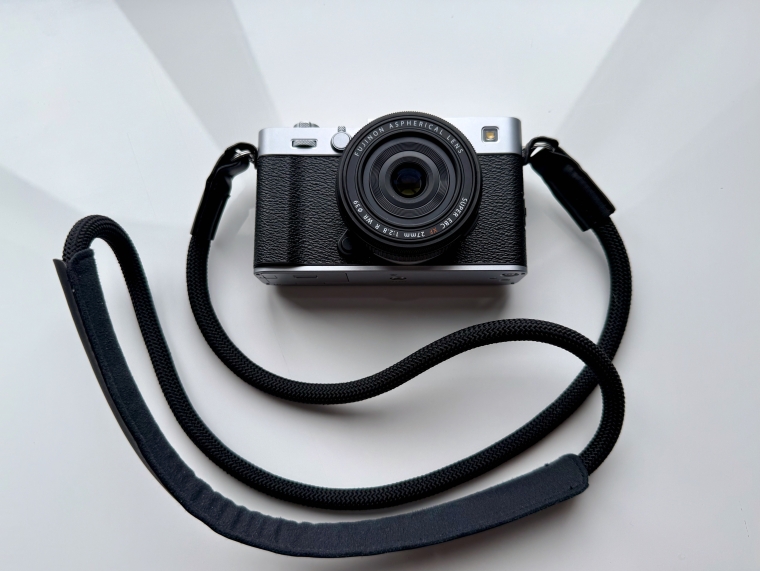
Digital cameras have staged a comeback in recent years, at the premium end of the market as photographers seek image quality that surpasses smartphones.
Which by itself presents a tricky proposition, given how dramatically smartphone cameras have improved.
However, the laws of physics still favour bigger sensors and lenses for capturing superior pictures and video. If you're into photography (and videography to a lesser degree) Fujifilm's new X-E5 makes a case for carrying a dedicated camera, delivering truly great image quality in a pocketable package.
Size-shrinking mirrorless design
The X-E5 is a mirrorless camera, which means ditching optical viewfinders for electronic displays. Instead, you compose shots using either on the articulated touchscreen or the rangefinder-style electronic viewfinder on the top left-hand side of the camera.
Although this approach gives you an electronic view of the world and not a clean, optical one, it brings size and weight reduction which really matter. The best camera remains the one you actually carry, and the X-E5 is great for portability.
It's small enough for a jacket pocket with the right lens and unobtrusive enough to avoid drawing unwanted attention.
Then there's the retro styling delivers premium aesthetics with genuinely lovely build quality, which is perfect for late-capitalism Grey Lynn hipsters trying to ignore falling house prices while labouring under the misapprehension that "disposable income" is still a thing,
Fujifilm includes a tasteful rope strap that goes well with the camera's look.
Biggish sensor for excellent image quality
Without diving too deep into digital photography jargon, the secret sauce here is the X-E5's 40.2-megapixel X-Trans CMOS 5 sensor. A few years old by now, the sensor is considerably larger than what's in smartphone cameras but smaller than full-frame professional systems.
The APS-C (Advanced Photography System Classic) format sensor size is compromise between image quality and portability. In simple terms, bigger sensors can result in better image quality, but there are drawbacks as such cameras need to be large large, requiring powerful and fast processors, really, really expensive and with big and heavy lenses.
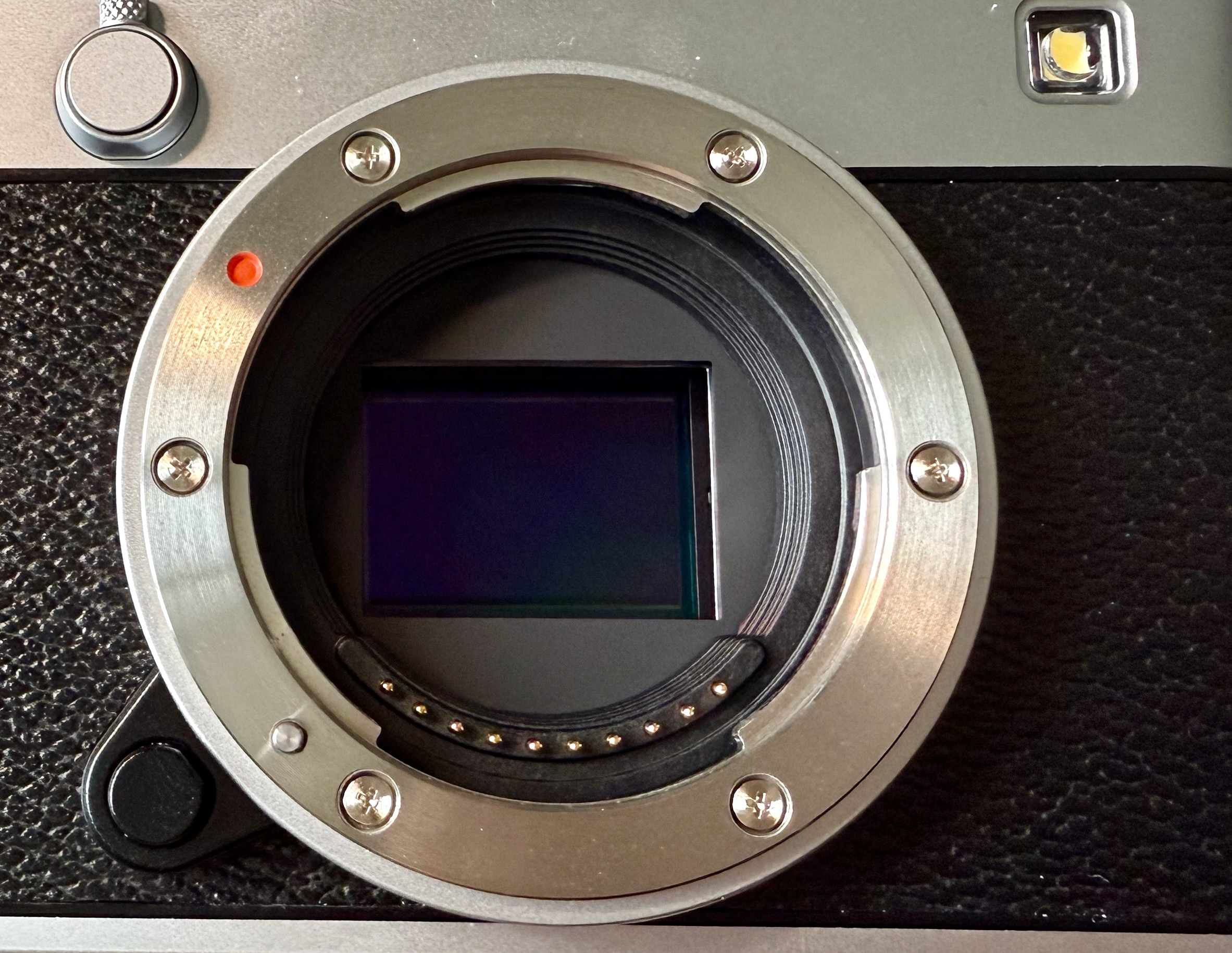
With a high-resolution APS-C size sensor it's possible to make a compact camera that delivers superb image quality, without requiring a second mortgage to buy it.
There are some quirks though, like the sensor's crop factor of 1.5 which affects how lenses perform compared to full-frame (35 mm) equivalents. Fujifilm's supplied a small f2.8 27mm Fujinon pancake lens that becomes effectively 40.5mm in full-frame terms. This is a slightly unusual focal length, as it sits between moderately wide (35 mm) and "standard" (50 mm, both in full frame terms) focal lengths.
The X-E5 is advertised with an optional kit that has a new 23 mm lens (effectively 34.5mm) which seems more versatile for street photography and general use. At this stage, I should point out that you can change lenses easily on the X-E5, and that there are a vast amount to choose from. Fujifilm has an excellent range of Fujinon lenses, but there are third party makers as well.
Similarly, with a 1.5 crop, the f2.8 aperture effectively becomes f4.2 for depth-of-field calculations. Why this matters is that a big aperture gets you that lovely separation of foreground objects and blurred backgrounds (bokeh); and, the faster wide aperture lets in more light as well.
Nevertheless, you get excellent real-world results from the 27 mm lens. But I was a bit lukewarm on the lens as you can hear the auto-focus whirring while shooting. You don't want that kind of noise in your videos so compact pancake size irregardless, pick another lens for silent movies. I don't know if the 23 mm kit lens also whirs, but you might want to check that before buying.
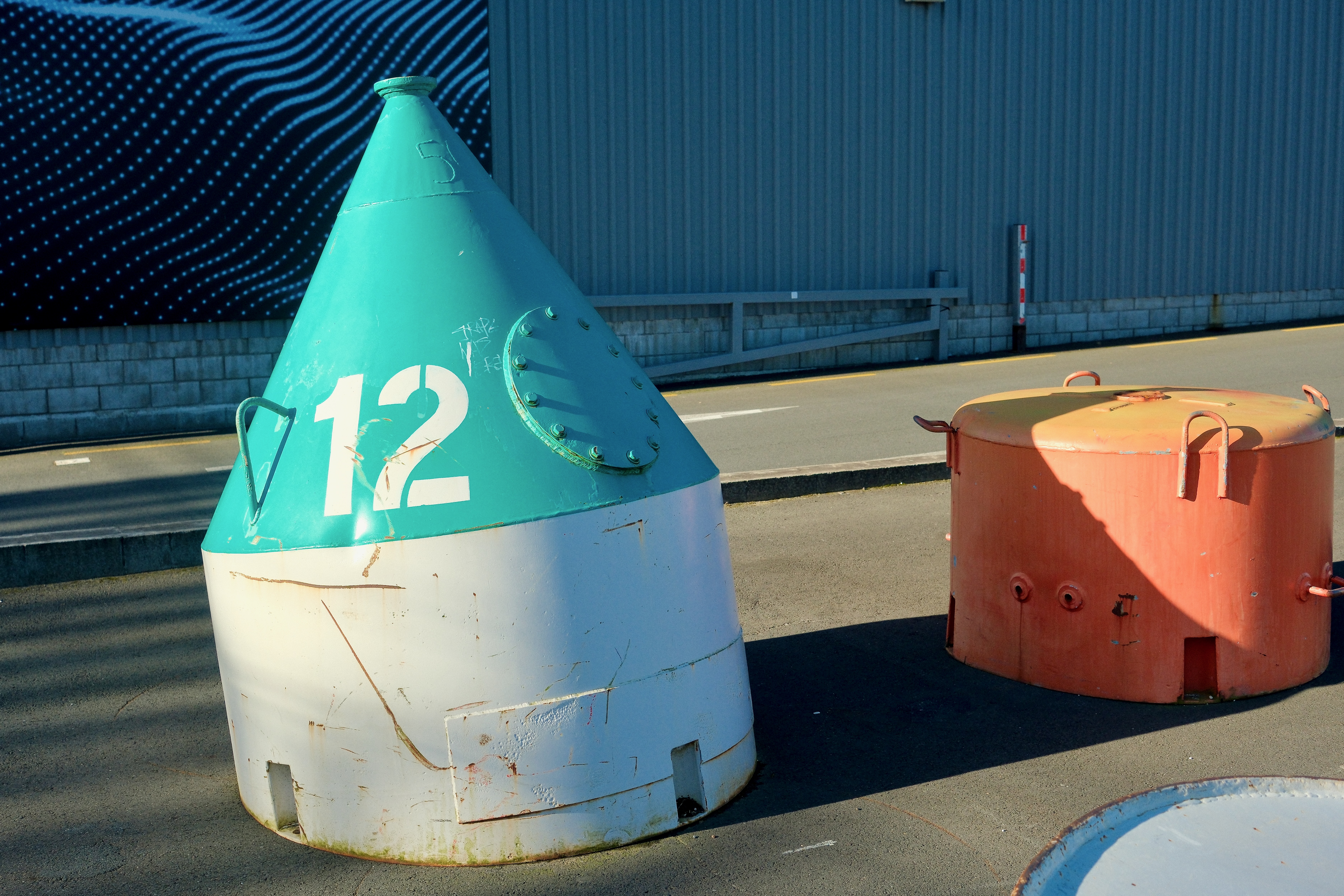
One thing's clear though, the X-E5's high-resolution sensor provides class-leading detail. It also has a wide sensitivity range, starting at ISO 125 (extendable to 64) and going as high as 51,200. Again, this is digital sensor light amplification ju-ju, but it means you have a great deal of latitude for your pictures. At night, I used ISO 6400 which is quite high and still got fairly noise-free images.
Having a hi-res sensor provides a degree of future-proofing too. More pixels mean greater flexibility for cropping, format changes, and editing without quality loss, because the more information you record for images and video, the more you have to play with while still maintaining image quality.
Stabilisation tech keeps things sharp
Fujifilm's in-body image stabilisation (IBIS, not to be confused with Aussie bin chickens) tackles the challenge of handheld shooting with such a high-resolution sensor. Lots of little photo diodes on a small surface means little vibrations are picked up, so with 40 Mpixel on the chip, you'd normally be limited to fast shutter speeds to avoid blurry pics.
Here, the five-axis system provides up to seven stops of stabilisation, and works alongside optically stabilised lenses or compensating for non-stabilised glass. It's important to call lenses "glass" to sound like you know your photography stuff, OK?
IBIS is great. It stretches the classical 1/focal length shutter speed rule dramatically, I found, and is great for low-light shooting.

Where 1/30th second would typically be the limit for the 27mm lens, IBIS enables sharp handheld shots at much slower speeds. I achieved consistently sharp results at one second exposures, though blurring of people and objects moving around become an issue at such slow shutter speeds of course .
Impressive video specs but X-E5 is a stills-oriented camera
Video recording can be maxed up to 6.2K resolution with professional colour profiles including F-Log and F2-Log. That means you shoot with a flat-ish colour profile and "grade" in post production to get the colour look you want, while maintaining a high dynamic range that might otherwise be lost with compressed video files.
The X-E5 also oversamples 6.2K footage to produce detailed 4K output. There's no 8K mode though, but you can do 4:4:2 output, and there's HDMI as well.
Bit rates reach 200 megabits per second with 10-12 bit colour depth, again, impressive specifications for such a compact body.
However, the X-E5 lacks a dedicated movie/stills switch and you need to press a button and jiggle the joystick to put the camera into video mode. There's probably a way to assign video mode to a dedicated button, but the default suggests moving pictures remains secondary to still photography.
Microphone connectivity requires a USB-C adapter that's easy to misplace. Shooting video heats up the X-E5 quite a bit, and I got around 45 minutes using 6.2k, 4:4:4 and HEIF output. Not bad really, but other cameras are a more videographer friendly.
Casual video makers should find the quality more than adequate however.
Plethora of controls demand patience and practice
The X-E5 has lots of features, and due to that, 20 different knobs, buttons, levers, and dials to operate the camera. Many of the controls are customisable to personal preferences.
On the one hand, this puts you in charge of the photographic capabilities of the X-E5. On the other, it also creates a steep learning curve as you try to work out how to set the X-E5 for best results in a given shooting situation. It's pretty much guaranteed that whatever you throw at the X-E5, the camera can handle it as long as you figure out what dial to turn and knob to press, but remembering which one does what takes learning.
That's before we get into the multi-page menu system which requires careful study to establish sensible shooting defaults. Fujifilm's ones are a start, but you're not making full use of the expensive camera by leaving the settings as-is.
It's by learning the many different settings you'll get the great results for creative photography, and I suspect the target market for the X-E5 will very much enjoy doing just that. Besides, the camera kind of nudges you towards manual control, just to see what happens.
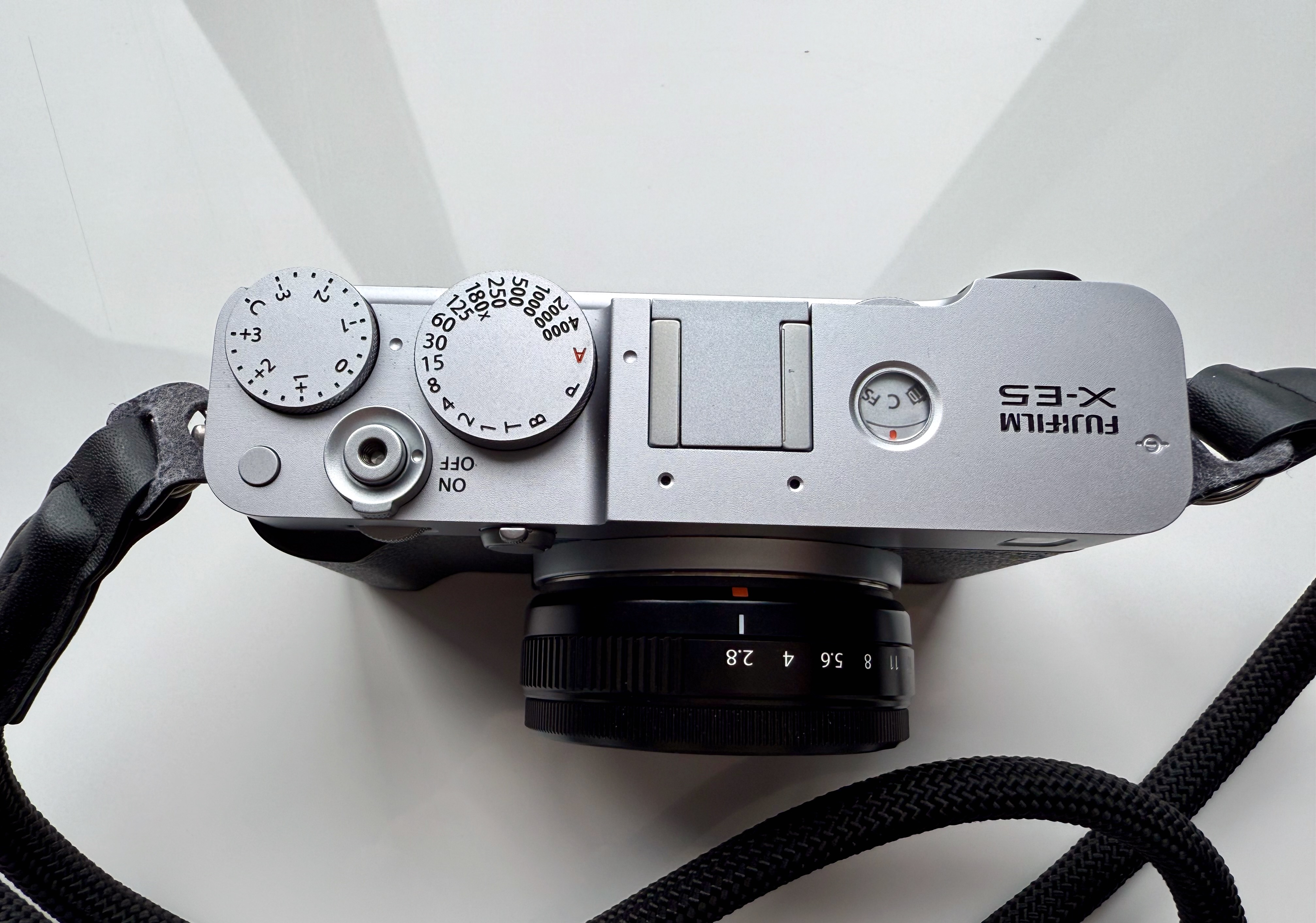
A flip side of the above is that all the different controls make accidental setting changes annoyingly easy.
For example, I initially struggled with a black viewfinder, eventually discovering the button that switches between display modes.
Speaking of the viewfinder, it and the rear screen offer adequate quality but higher resolution, refresh rate and brightness would improve the shooting experience, particularly outdoors.
File transfer works via Wi-Fi or USB-C. I've yet to come across a great wireless implementation for file transfers, and Fujifilm's one is a bit meh and slow. There's software to load on smartphones for file transfers, but again it's not that great although I liked using my iPhone as a remote control.
Stick to wired USB-C which provides faster and more reliable file transfers, particularly with RAW images that weigh in at 87.5 megabytes each and videos that are even chunkier.
Big files for stills and even larger ones for video means the single memory card slot on the X-E5 should be have a very fast SD card inserted for smooth operation of the camera.
USB-C charging works with the battery in-camera but it's a bit slow so get a dedicated charger.
Roll yer own film simulations
Fujifilm's analogue heritage is apparent in the 20 film simulations for the X-E5. They are easily accessible via a dedicated dial on top of the camera, with many of them inspired by old Fujifilm negative emulsions.
You're not confined to Fujifilm's idea of how film should look though. Three custom settings allow for custom "film recipes" so you could make a grainy, black and white 50s one, a vivid option, or keep it neutral for later post processing. Switching between the film simulations is easy, and you can use a bracketing feature to shot a scene with three different ones, and decide which one to use afterwards.
Initially, this seemed gimmicky compared to shooting RAW and post-processing on a big screen, but the convenience and time savings of in-camera processing is genuinely useful for many situations, particularly if you're a journalist. Deadlines are only one s short of deadliness and all that.
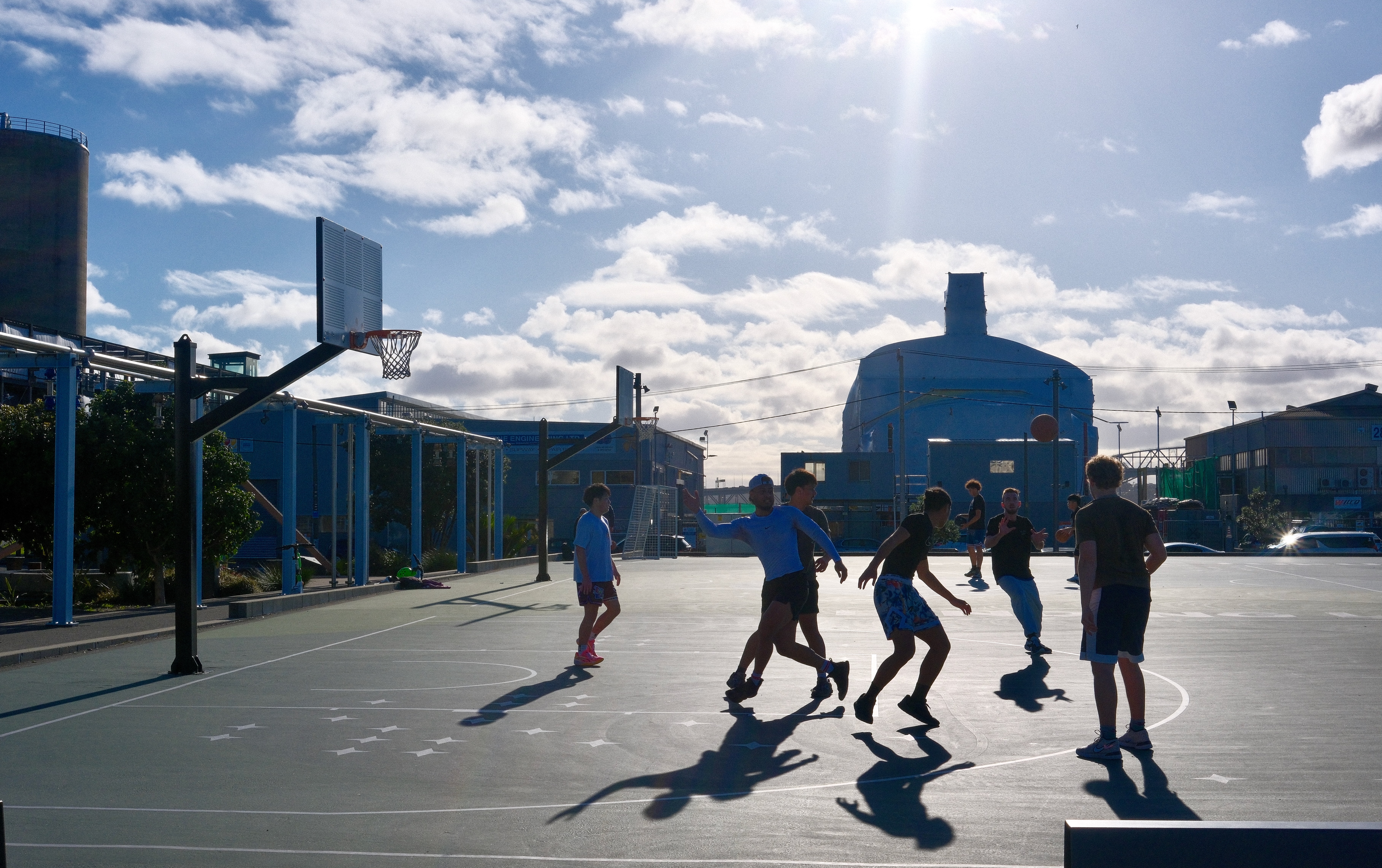
The simulations capture the character of classic Fujifilm film stocks, and it's a feature I wish I had had more time to explore before handing back the camera. I don't think it's possible to save the custom simulations out of the X-E5 and share with fellow photography nerds, but correct me if I'm wrong. Some way to preserve the film simulation used in the image file meta data would be nice too.
On the not-so-serious side of things, there's a filter setting hidden in the menu system as well. The toy camera one is quite arty-funny, and this is where the panorama shooting option is.
Pricey, steep learning curve, but the photos are great
At $2,899 for the body alone, the X-E5 is... quite an investment before considering the cost of lenses and accessories. What's more, the compact body of the camera lacks a built-in flash, so you need to buy one for fill lighting for example (there's a hot shoe/PC connector, which can also be used for microphones but not with the articulated screen folded forward which is suboptimal for the vlogging crowd).
However, if you look at the X-E5 as a long-term photography system rather than a casual purchase, it makes more sense.
I found some images in my photo library taken with the Fujifilm X-T2 camera which I reviewed eight years ago and they still look great. The X-T2 would probably still be OK today to use for most photography work.

The X-E5 rewards patience and learning with fantastic image quality in a portable package, and the camera is quite a unique proposition at the moment with no other manufacturer offering a similar technology package.
It takes time to learn the X-E5, and you'll have to put up with annoying photography nerds making up stuff the famous Henri Cartier-Bresson never said, like the first 10,000 photos he took being rubbish; but every now and then the X-E5 will capture a moment exceptionally well. If that matters to you, the Fujifilm X-E5 won't disappoint.
(Note: I shot in 10-bit HEIF format, with images converted to 8-bit JPEG for the site, and reduced in size.)
6 Comments
The price is getting up towards what you'd pay for a an entry-level full-frame format DSLR body. Admittedly you'd need to add lenses, but the quality and versatility are so much greater, particularly if you have a real interest in quality.
Examples: https://www.bhphotovideo.com/c/product/1082599-GREY/nikon_d750_dslr_cam…
https://www.bhphotovideo.com/c/product/1538607-REG/nikon_d780_dslr_came…
And if you've hung on to your film DSLR lenses (the way I did) it's a perfect match provided the manufacturers haven't changed the format of their lens mounts.
Nikon makes truly good cameras, but the bigger full-frame bodies are not in my view directly comparable to the much smaller X-E5. Everything's a trade-off, and I thought the size and capability equation really works with the X-E5. And yes, great to be able to re-use expensive lenses.
No one's shooting DSLR these days...
Fullframe mirrorless alternatives would be the likes of Nikon Zf, Panasonic s9, Sony A7c ii.
You mean apart from the wedding pros, and journalistic pros, and fashion, and wildlife, and studio work, and the prosumer market, and architecture, and students, and field sports...?
After 50+ years of amateur and semi-pro photo work, I'd say that it might be said more that pro photography has been swamped by what is admittedly good value equipment in the hands of amateurs, and the sheer volume of photos taken means something interesting gets produced by the law of averages.
And it means you have to buy yet another system, and what happens when you want something like a tilt-shift lens for architectural work, or actual specialist attachments for microscopy or astronomical or medical work?
And if you want to go genuinely mad with your systems: https://www.bhphotovideo.com/c/buy/Medium-Format-Digital-Cameras/ci/167…
Sure, 'some' photographers still use DSLRs. Suggesting someone buy a DSLR today is bad advice — the market and tech have clearly moved on. Mirrorless now dominates with 84% of interchangeable-lens sales and 77% of market value in 2024, offering faster autofocus, better video, and lighter bodies. DSLRs are legacy gear; moving with the times means going mirrorless.
Love these tech reviews. Very informative.

We welcome your comments below. If you are not already registered, please register to comment
Remember we welcome robust, respectful and insightful debate. We don't welcome abusive or defamatory comments and will de-register those repeatedly making such comments. Our current comment policy is here.